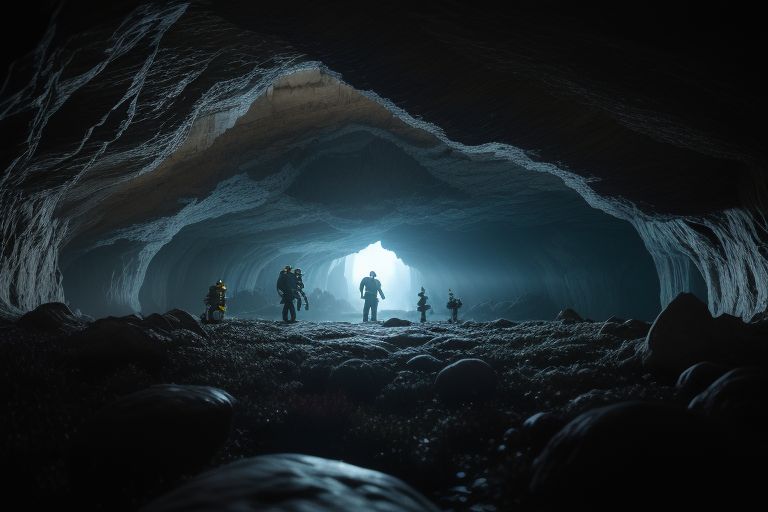Exploring the Depths: The Fascinating World Beneath Our Feet
Beneath the tranquil landscapes we tread upon lies a world of mystery and wonder—caves, hidden passages, and subterranean chambers that beckon explorers and scientists alike. These natural marvels, often hidden from plain sight, hold secrets that offer glimpses into Earth’s geological history and the resilience of life in extreme environments.
The Geological Tapestry: Formation and Types of Caves
Caves are geological formations sculpted over millions of years by natural processes such as erosion, dissolution, and volcanic activity. From limestone caves carved by acidic groundwater to lava tubes formed by molten rock, each type offers a unique window into the Earth’s past. According to Dr. Amanda Hayes, a geologist specializing in karst formations, “Caves are like time capsules, preserving evidence of climate change, ancient life forms, and geological events.”
Recent Discoveries: Unveiling Hidden Treasures
In recent years, technological advancements and dedicated exploration have unveiled stunning new discoveries beneath Earth’s surface. One notable find is the Son Doong Cave in Vietnam, the world’s largest cave passage, discovered in 2009 and further mapped to reveal its vast chambers and underground rivers. Dr. Nguyen Minh, a leading speleologist, remarks, “Son Doong’s sheer scale challenges our understanding of what lies beneath our feet.”
The Life Below: Ecosystems in Darkness
Contrary to popular belief, caves are not barren spaces but thriving ecosystems. Unique species adapted to darkness and isolation flourish here, from blind fish in subterranean rivers to albino insects navigating labyrinthine passages. “These ecosystems are fragile,” cautions Dr. Maria Rodriguez, an ecologist specializing in cave biodiversity. “Understanding them is crucial for conservation efforts.”
Challenges of Exploration: Journeying into the Abyss
Exploring caves is not without challenges. Extreme environments, limited accessibility, and the risk of cave-ins pose formidable obstacles to researchers and adventurers alike. Recent expeditions, such as the exploration of the Lechuguilla Cave System in New Mexico, have pushed the boundaries of human endurance and scientific discovery.
Technology’s Role: Mapping and Preservation Efforts
Advancements in technology have revolutionized cave exploration. LiDAR (Light Detection and Ranging) mapping, drones, and 3D modeling techniques now enable detailed mapping of complex cave systems without disturbing delicate ecosystems. “LiDAR has transformed our ability to understand cave structures,” explains Dr. Jonathan Clarke, a geospatial scientist. “It allows us to create accurate digital models while minimizing our impact on these sensitive environments.”
Conservation Imperative: Protecting Subterranean Ecosystems
Preserving caves and their fragile ecosystems is paramount. Increased tourism and climate change threaten these delicate environments. Organizations like the International Union of Speleology (UIS) advocate for responsible cave exploration and conservation. “Balancing exploration with conservation is crucial,” emphasizes Dr. Sofia Gomez, a conservation biologist. “We must ensure these wonders remain intact for future generations.”
The Future of Exploration: Beyond Earth’s Caves
Looking ahead, the exploration of caves on Earth offers insights into potential extraterrestrial habitats. Mars, for instance, shows geological features resembling lava tubes—suggesting possible subterranean environments. Dr. James Robertson, an astrogeologist, comments, “Studying caves on Earth prepares us for future missions to Mars and beyond.”
The Future of Exploration: Beyond Earth’s Caves
As we peer beyond the surface, Earth’s subterranean wonders reveal a tapestry of geological marvels, diverse ecosystems, and untold stories. From the towering chambers of Son Doong to the delicate ecosystems of underground rivers, each cave holds a piece of our planet’s history and a promise of future discoveries. With careful stewardship and continued exploration, these hidden realms will continue to inspire awe and deepen our understanding of the world beneath our feet.
In conclusion, Earth’s caves are not merely geological formations but windows into the past, laboratories for scientific inquiry, and potential keys to understanding life beyond our planet. As technology advances and our knowledge grows, the journey into Earth’s subterranean realms promises to unveil even more of its mysteries, enriching our appreciation for the complexity and beauty of our planet.





